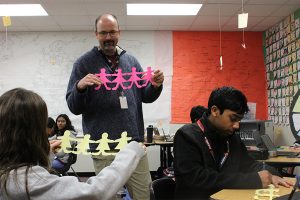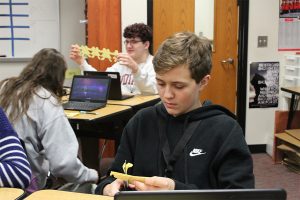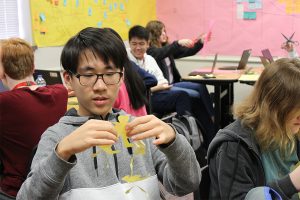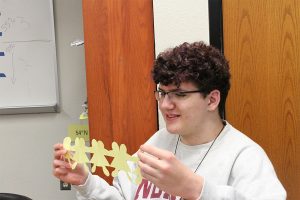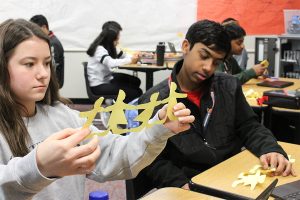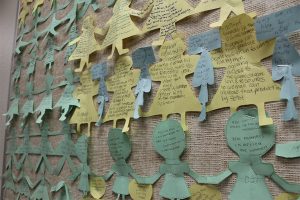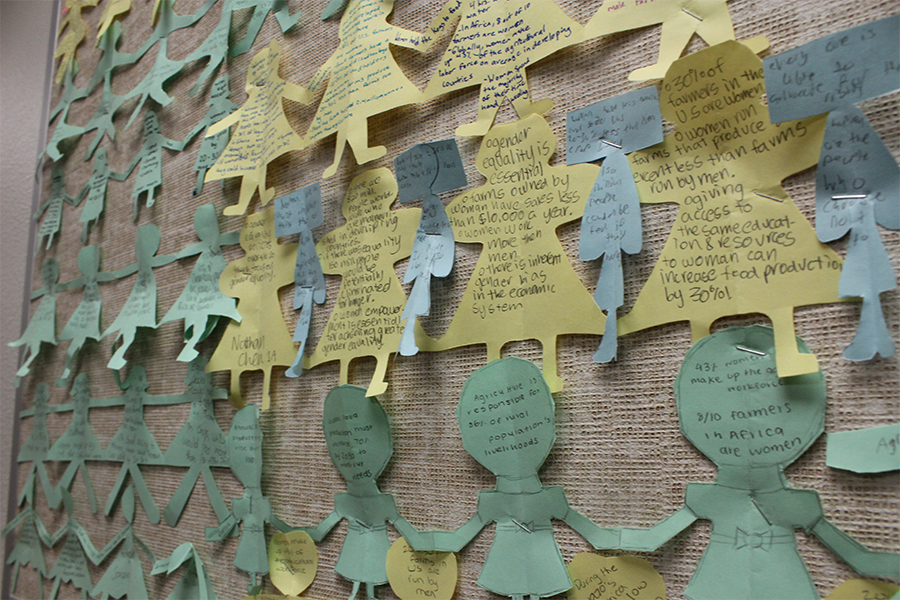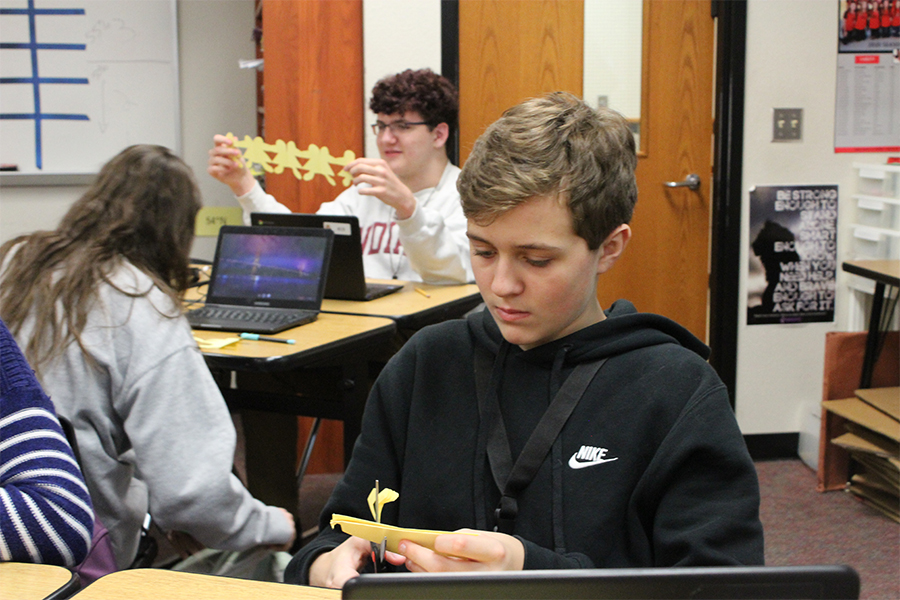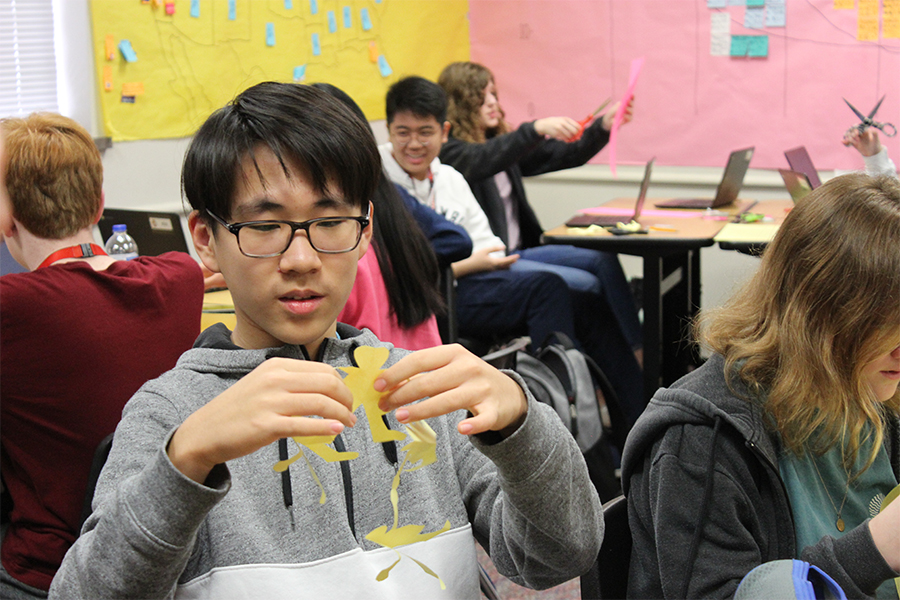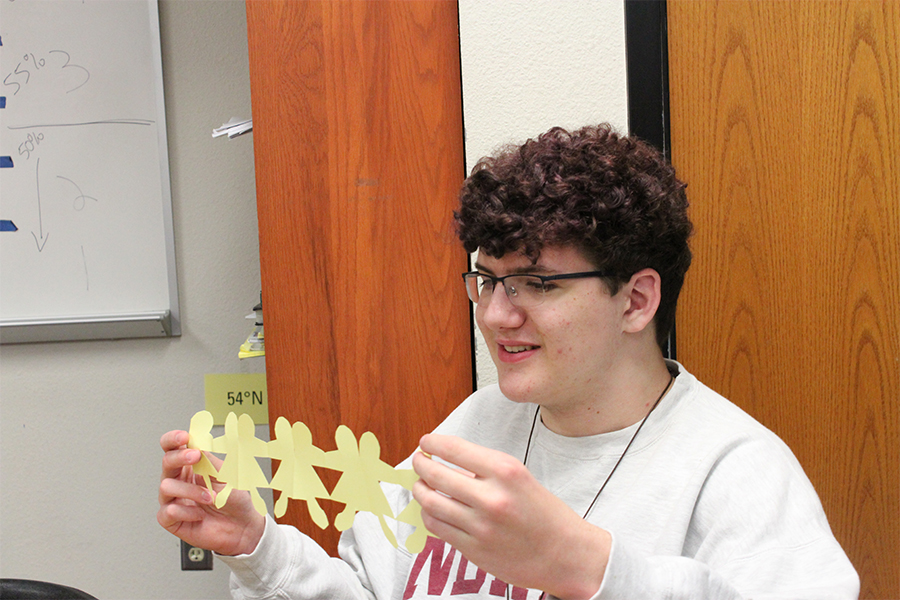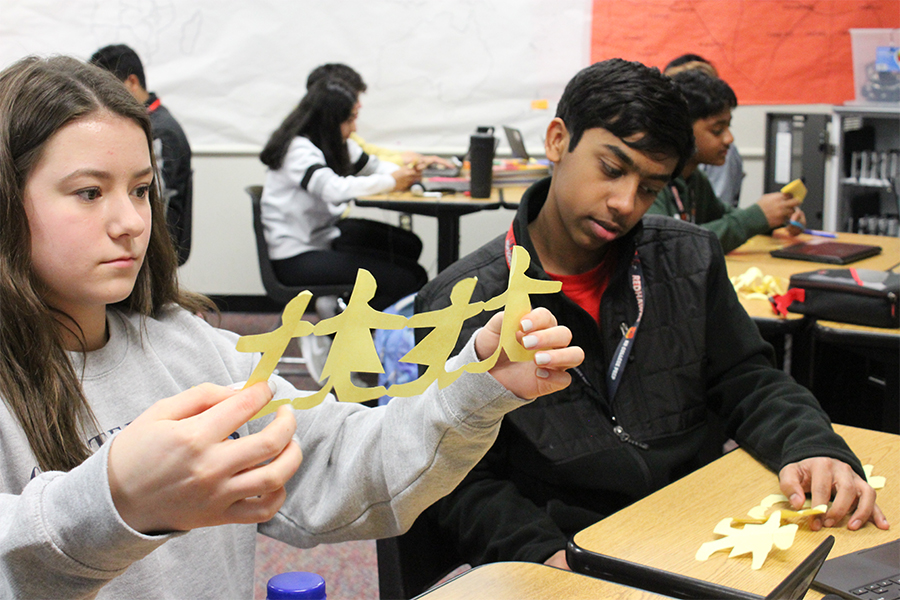Caroline Caruso, Guest Contributor
January 23, 2020
-
A bulletin board outside of the classroom of Tim Johannes features an array of paper cutouts.
The work is part of an AP Human Geography project that looked at the role of women in agriculture.
-
Freshman Hanna Knox compares her paper doll chain to the example being held by AP Human Geography teacher Tim Johannes on Thursday, Jan. 24, 2020.
The project was part of a new unit look at agriculture around the world. For this specific assignment, students learned about how new technology can impact agriculture and the role of women in agriculture.
-
Using scissors to cut out a paper doll chain, freshman Blake Enloe works on his women in agriculture cutout in the AP Human Geography class of Tim Johannes.
Once students finished their cutout, they used Chromebooks to research information and write statistics and facts on their paper doll chain.
-
Freshman William Zhang and the rest of the students in the AP Human Geography class spent Wednesday and Thursday creating paper doll chains.
The arts and craft project saw students cut out the dolls and then write facts about women in agriculture on them.
-
The first step in the project for freshman Adam Walker was to cut out a paper doll chain. From there, the students had to write facts about the role of women in agriculture on the paper doll chains.
-
Holding up her paper doll chain Hanna Knox examines her work while fellow freshman Vishnu Vasudev takes a look at his creation.
The students made paper doll chains as part of a new unit in AP Human Geography with teacher Tim Johannes using the project to explain the role of women in agriculture.
-
A bulletin board outside of the classroom of Tim Johannes features an array of paper cutouts.
The work is part of an AP Human Geography project that looked at the role of women in agriculture.
-
Freshman Hanna Knox compares her paper doll chain to the example being held by AP Human Geography teacher Tim Johannes on Thursday, Jan. 24, 2020.
The project was part of a new unit look at agriculture around the world. For this specific assignment, students learned about how new technology can impact agriculture and the role of women in agriculture.
Beginning a new unit Wednesday and Thursday, AP Human Geography teacher Tim Johannes is having students complete a research project over gender roles in agriculture, by using more of an arts-and-crafts approach.
“Basically, we made paper doll chains and researched the roles of women in agriculture,” freshman Sarthak Dhawan said. “How through granting more resources, they would be able to make a huge impact in ending world hunger.”
The idea of doing more creative-based projects as a way of learning important concepts was appealing to freshman Harley Classe.
“It gives us a chance of doing something out of the ordinary instead of just sitting and listening to notes,” Classe said. “We actually get to apply what we’re learning and try something new. This project is important because it gives us a better understanding of how the world is changing from how it used to be compared to now, and what the main goal is.”
By creating something different via the paper doll chains, Johannes wants his students to understand the issues that many people face in today’s world.
“As each new technology shows up to certain areas, especially poorer ones, a lot of the time only men benefit from it,” Johannes said. “We’re looking at how women getting more involved with the technology would help areas around the world. When women get more involved in agriculture, they can help their families out, can send the kids to school, even more often than men in many cases. It’s an eye opener for a lot of kids because they don’t really understand that part of it. Agriculture is very foreign to people in the United States.”



